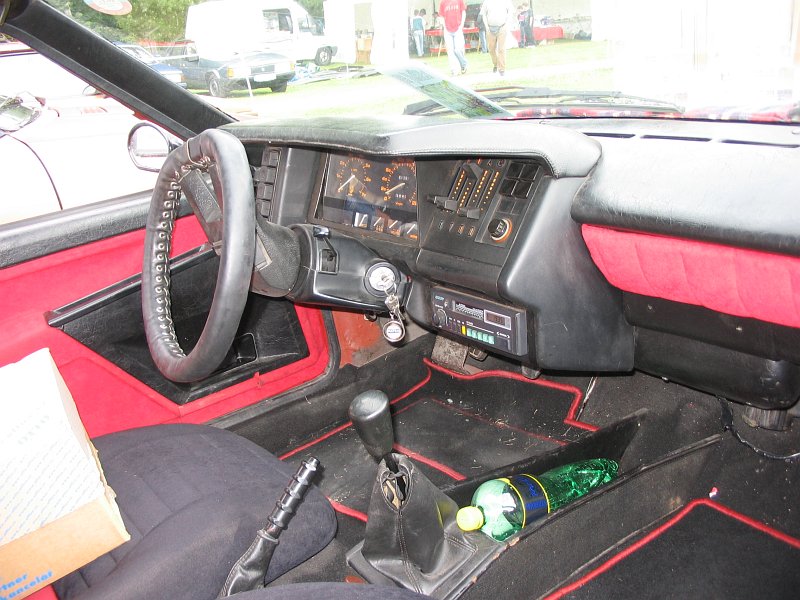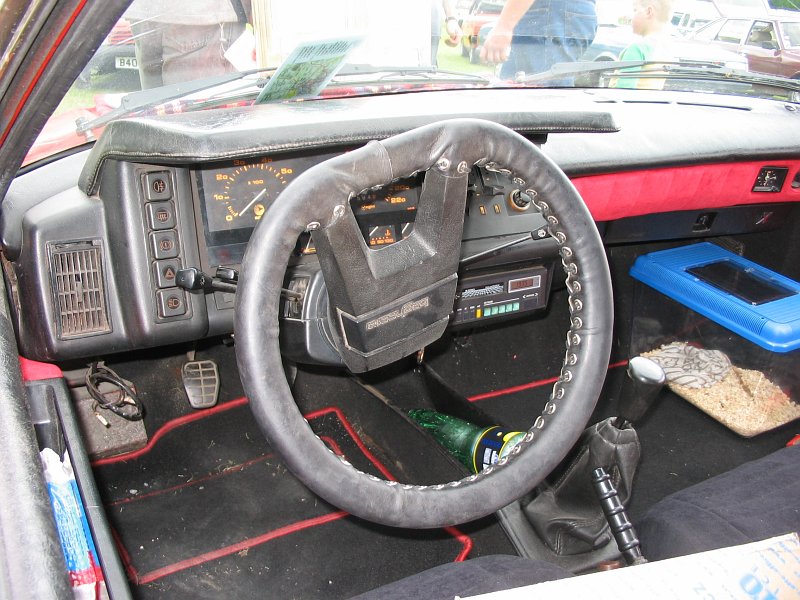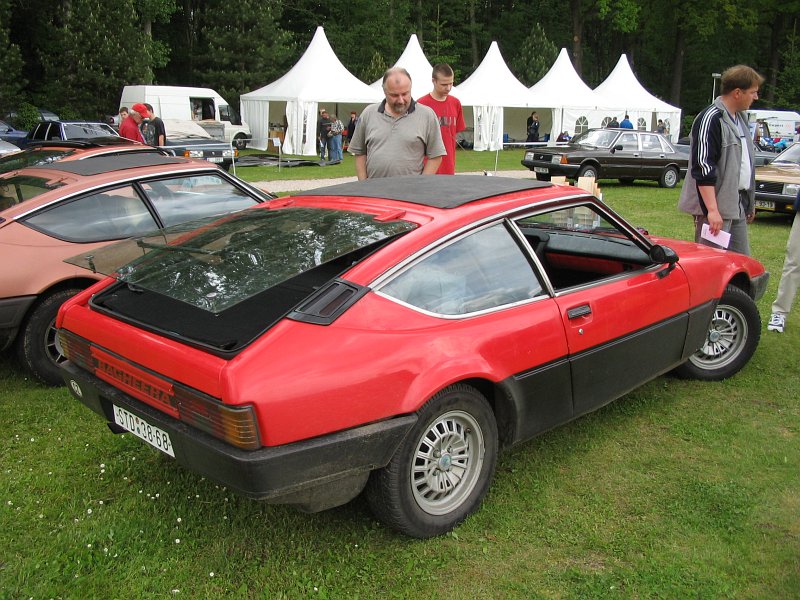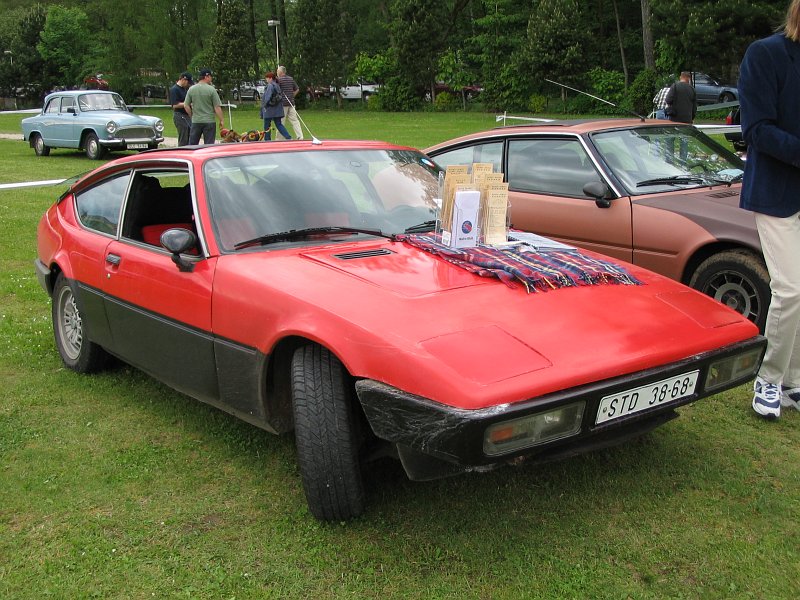Description
The Matra-Simca Bagheera 1.5, introduced in 1978, was the final and most powerful evolution of the Bagheera range. It represented Matra’s answer to growing expectations for stronger performance in the compact sports-coupé market while retaining everything that made the Bagheera distinctive: the mid-engine layout, the lightweight fibreglass body panels, the pressed-steel monocoque and the unique three-across seating arrangement. The 1.5 was the definitive version of the model, offering more punch, improved drivability and a more mature overall character without sacrificing the playful, agile spirit of the original design.
The Bagheera 1.5 used the same underlying structure as earlier versions, combining a steel monocoque backbone with polyester-fibreglass outer panels bonded to the chassis. This method allowed Matra to create large, wedge-shaped surfaces and distinctive styling without heavy tooling, while giving the car good aerodynamic efficiency and low weight. The mid-engine layout still placed the transversely mounted drivetrain directly behind the cabin, preserving the car’s balanced handling and spacious interior despite its compact footprint.
The heart of the Bagheera 1.5 was the larger 1,442 cc Simca inline-four. This engine, already used in the Bagheera S, produced around 90 horsepower in standard tune. What set the 1.5 apart was refinement: the carburation, ignition and cooling systems were revised, resulting in smoother delivery, better reliability and improved flexibility at lower engine speeds. The increase in displacement and torque made the car easier and more enjoyable to drive in day-to-day conditions, while still offering a top speed close to 185 km/h (115 mph). The new engine transformed the Bagheera from a lively small coupé into a genuinely competent touring sports car.
The suspension remained fully independent, with coil-spring wishbones at the front and coil-spring trailing arms at the rear. Matra fine-tuned the setup to handle the increased torque and give the 1.5 a more settled feel on rougher roads. Steering continued to be direct and light, amplifying the mid-engine chassis’ natural balance, and braking was handled by front discs and rear drums — a configuration that suited the car’s weight and performance. Road testers praised the 1.5 for its composure, stability and enjoyable handling, which retained the Bagheera’s trademark agility while feeling more mature and stable at higher speeds.
Styling updates for the 1.5 were subtle but helped mark it out as the range-topper. Many cars received black-painted lower body sections, distinctive striping and sportier wheel designs. The overall shape remained the same: a clean, aerodynamic wedge with a long, sloping nose, pop-up headlights and a sharply angled fastback tail. These proportions gave the Bagheera a futuristic look that stood out in the 1970s sports-car landscape and still looks remarkably modern today.
Inside, the 1.5 continued the Bagheera tradition of three-across seating, with the driver slightly offset ahead of the outer occupants. This layout made the car surprisingly useful as a sporty family coupé while preserving a low, driver-focused cockpit feel. The 1.5 usually featured upgraded upholstery, revised fabrics and modernised trim colours that gave the cabin a more upmarket appearance. The dashboard remained clean and functional, angled toward the driver with clear instrumentation and straightforward controls. Practicality was enhanced by the rear boot, made possible by the compact transverse drivetrain.
On the road, the Bagheera 1.5 delivered exactly what Matra intended: a more powerful, more flexible and more refined version of its innovative mid-engined sports coupé. The stronger engine broadened its appeal, giving it improved overtaking ability, better cruising performance and more relaxed long-distance behaviour. It remained light, agile and playful on twisting roads, with the chassis’ balance allowing drivers to confidently exploit its modest but eager power. Its combination of practicality, efficiency and handling made it one of the most versatile sports cars of its price class.
The Bagheera 1.5 remained in production until the entire Bagheera line ended in 1980, paving the way for the more modern Matra Murena. While exact production numbers for the 1.5 are difficult to isolate, it represents a meaningful portion of the almost 48,000 Bagheeras built — making it relatively common in period but highly prized today due to rust issues in the steel monocoque.
Today, the Matra-Simca Bagheera 1.5 is regarded as the most complete expression of the Bagheera formula. With its larger engine, improved refinement and distinctive styling, it is both the most desirable and the most usable version of Matra’s inventive sports 2+2+1. It remains a unique and charming example of French engineering imagination: lightweight, aerodynamic, practical and delightfully unconventional.





